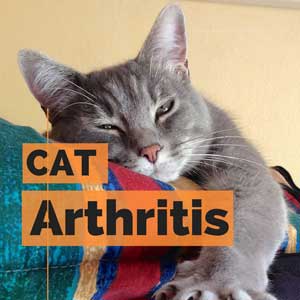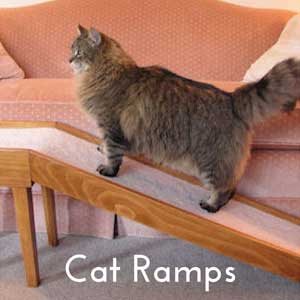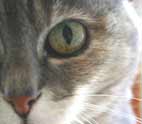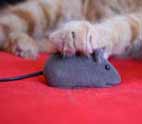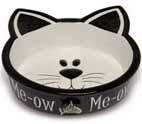Three Legged Cat
Their Care Needs
Owning a three legged cat or even a two legged cat may sound like something too distressing and difficult to comprehend.
Lets me honest here it’s not always easy and does require lots of extra care from the owner, but it is not something which cannot be overcome.
Having a leg amputated is not as traumatic for a cat as it is for a human. After all we have only two legs they have four, so loosing one still means they are able to get about a whole lot easier than we can.
But it will still hold many challenges for a cat and there will be a period of adjustment which can take some time and which can be difficult for the cat owner to witness.
Why Do Cats Have To Have Amputations?
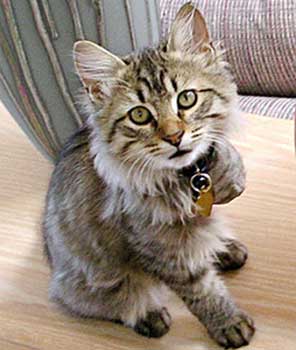
There are several reasons why a cat may have to have a leg removed. Disease and tumours are of course one major reason but unfortunately leg breaks can also result in loosing a leg.
This was news to me as I though a leg break could be simply fixed with pins or plastering, like most human leg breaks.
But I found out the hard way that this is not so when my elderly cat fell and broke her hind leg and I was informed that it was very unlikely that the injury could be mended and that amputation was the best option.
(NB. Not all breaks would require amputation)
After Surgery - Helping The Three Legged Cat
A three legged cat may be very confused straight after surgery as to why they suddenly cannot easily do the things they used, like jumping, climbing, running etc. This initial period of time can be very distressing for both the cat and the owner. There is likely to be many awkward and painful movements and the occasional accident.
This period can also be distressing due to the fact that the cat may become frustrated and depressed and the cat’s behaviour may change accordingly, such as refusing to groom and comfort eating. This is understandable and varies from cat to cat depending on their personality but can be reduced with the right care and support from the owner.
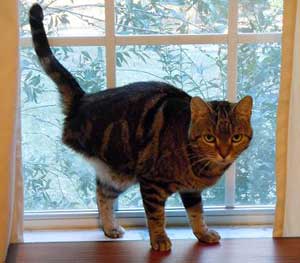
A three legged cat may be very confused straight after surgery as to why they suddenly cannot easily do the things they used, like jumping, climbing, running etc. This initial period of time can be very distressing for both the cat and the owner. There is likely to be many awkward and painful movements and the occasional accident.
This period can also be distressing due to the fact that the cat may become frustrated and depressed and the cat’s behaviour may change accordingly, such as refusing to groom and comfort eating. This is understandable and varies from cat to cat depending on their personality but can be reduced with the right care and support from the owner.
Things to do to help your three legged cat through this initial period of adjustment:
- Make sure their litter tray is accessible and not too far away from where they are resting. Often getting to the litter tray in time can be a problem at first or if depressed may not want to make the effort in getting to the tray if too far away.
- Make eating easier my temporary removing the surgery collar. These large collars are designed to stop the cat nibbling at their wound and stitches but it can make eating and drinking very difficult.
- Make sure the cat has a quite warm and comfortable spot to recover from the surgery and to get used to his disability.
- Some help with cleaning after toileting may be required as they may not be able to clean themselves properly at this stage.
Long Term Care For Your Three Legged Cat
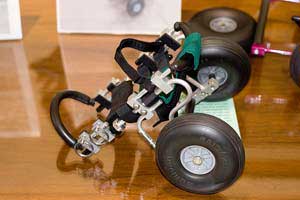
Getting used to their disability may take some time for some cats but it can be made a lot easier and quicker if their living environment is made more accessible and manageable for their disability.
It is important to mention here though that as much as it may be distressing to watch, allowing your cat to try and do things for themselves is important to long term recovery and a happier life. If you carry them around or lift them up onto things too much they will become reliant on you and never learn to do things for themselves or build muscle tone.
- Furniture – moving furniture closer together initially will help a cat to get from one piece to another if this is something they liked to do before. As they gain in confidence and strength over time the furniture can be returned to their normal positions.
- Small ramps can be built or bought to help a cat get to their favourite place if this is somewhere a little higher than normal, say a bed or window sill.
- Litter tray – Some re training may be required here if the cat becomes depressed and refuses to use their tray.
- Place them in the tray after meals
- Make sure the sides of the tray are not too high
- Removing any lids from the top of litter trays may initially help.
- Food - three legged cats may become less active than they once were and couple this with the comfort factor of eating and weight gain can become a real problem. So ensuring that a feeding routine is put in place early on will help to combat this problem.
Also distraction from the desire to eat all the time is needed from the owner. So when the cat cries for extra food instead of giving in to them, try playing a new game with them. Over time this over eating behaviour will be forgotten and the bond between you will have become stronger, helping to comfort and provide a happy more active life for your cat.
Pet Wheelchairs and Prosthetics
Although amputee or paralysed dogs have been using specially designed wheelchairs for several years now it only been recently that some manufacturers have designed them for cats.
The use of a wheel chair for a cat very much depends on the cat’s personality and age. A young cat is far more likely to be able to adapt to using a chair than an old cat. And if your cat is a very active outdoor cat that liked to climb trees etc it is likely that the use of a chair would be unsuitable.
These wheelchairs are also not really suited to the outdoors and so are really only suitable for cats who lead an indoor life only (outdoor use can be made under supervision).
There are many discussions and concerns about the use of a wheel chair for a cat amongst the animal professions and it is right for these concerns and discussions to be carried out. So it is always advisable to discuss fully with your vet the possible implications of using a wheelchair for your cat and whether or not your cat would be suited to its use.
One supplier of pet carts (this is not an endorsement):
Eddies Wheels (USA)
Although I have little knowledge about pet prosthetics there are several companies who supply various different items for three legged cats etc from part limbs to braces. Again full discussion of their use should be had with your vet before use. Two such companies are (these are not an endorsements):
Lacerta (part of the university of Salford UK
Ortho-pets, USA
Other pages you may find interesting
Top of this Three Legged Cat Page
